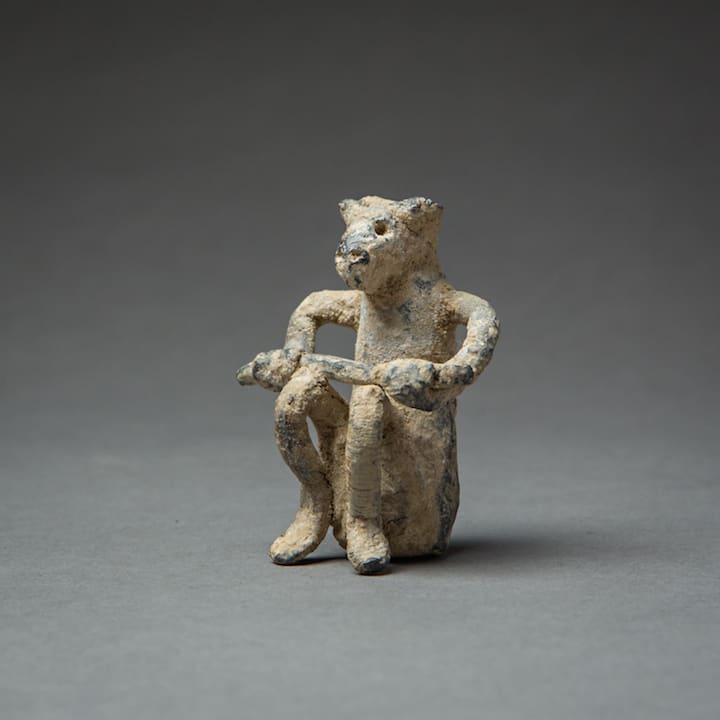Bactrian lead miniature figurine of a monkey, 600 BCE - 300 BCE
Lead
5.7 x 4.4 cm
2 1/4 x 1 3/4 in
2 1/4 x 1 3/4 in
OF.101
Bactria or Bactriana was the name of a historical region in Central Asia, located between the Hindu Kush mountain range and the Amu Darya river, more or less covering the...
Bactria or Bactriana was the name of a historical region in Central Asia, located between the Hindu Kush mountain range and the Amu Darya river, more or less covering the flat region that stretches between modern-day Afghanistan, Uzbekistan and Tajikistan. Metallic lead beads dating back to 7000–6500 BC have been found in Asia Minor and may represent the first example of metal smelting. At that time lead had few (if any) applications due to its softness and dull appearance. The major reason for the spread of lead production was its association with silver, which may be obtained by burning galena (a common lead mineral). The Ancient Egyptians were the first to use lead for sinkers in fishing nets, in glazes, glasses and enamels, for ornaments and cosmetics, all applications that spread to Ancient Greece and beyond.
Various civilizations of the Fertile Crescent, a region from the Persian Gulf, through modern-day southern Iraq, Syria, Lebanon, Jordan, Israel and northern Egypt, used lead as a writing material, as currency and for construction.
Lead was used in the Ancient Chinese royal court as a stimulant, as currency and as a contraceptive.
The Indus Valley civilization and the Mesoamericans used lead for making amulets and the eastern and southern African people used lead in wire drawing.
Various civilizations of the Fertile Crescent, a region from the Persian Gulf, through modern-day southern Iraq, Syria, Lebanon, Jordan, Israel and northern Egypt, used lead as a writing material, as currency and for construction.
Lead was used in the Ancient Chinese royal court as a stimulant, as currency and as a contraceptive.
The Indus Valley civilization and the Mesoamericans used lead for making amulets and the eastern and southern African people used lead in wire drawing.



